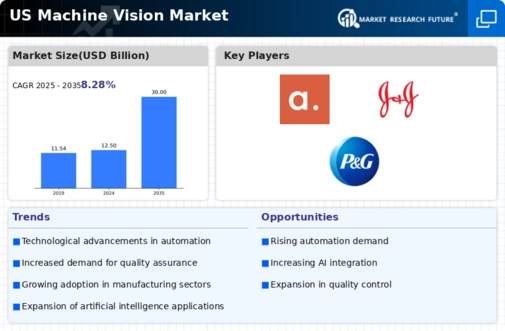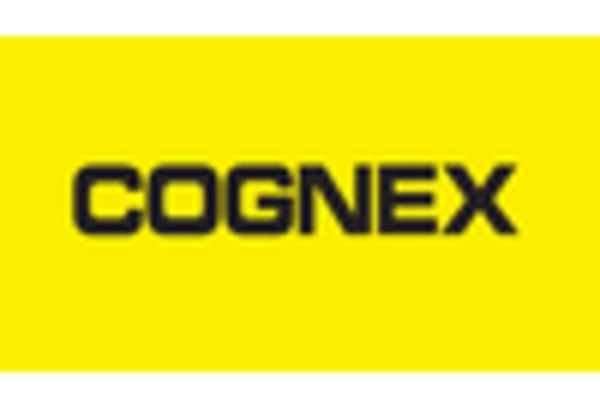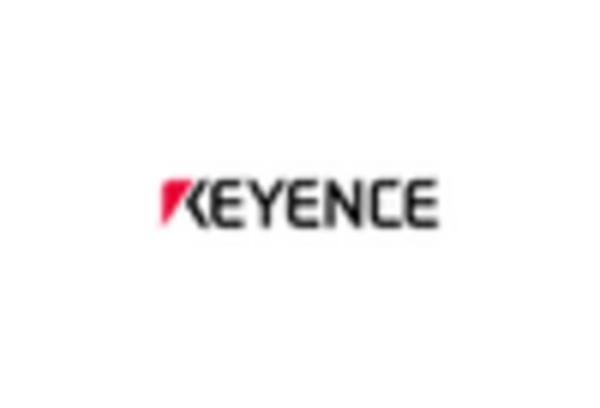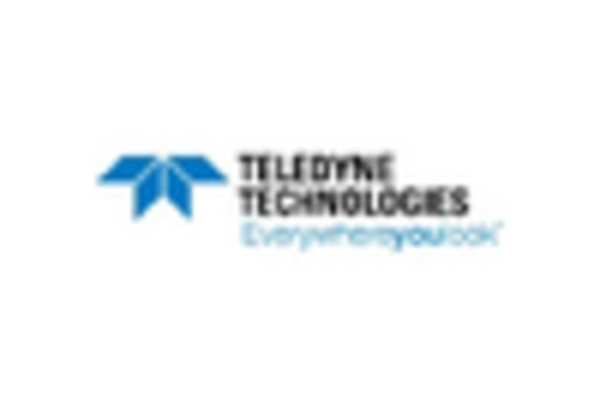Rising Demand for Automation
The machine vision market is experiencing a notable surge in demand for automation across various sectors. Industries are increasingly adopting automated solutions to enhance productivity and reduce operational costs. In the manufacturing sector, for instance, the integration of machine vision systems has been shown to improve quality control processes, leading to a reduction in defects by up to 30%. This trend is likely to continue as companies seek to streamline operations and maintain competitiveness. Furthermore, the market is projected to grow at a CAGR of approximately 7.5% over the next five years, driven by the need for efficient and reliable automation solutions. As such, the rising demand for automation is a critical driver for the machine vision market, influencing investment and innovation in this space.
Expansion of Robotics Integration
The integration of robotics with machine vision technology is becoming increasingly prevalent, significantly impacting the machine vision market. Robotics systems equipped with machine vision capabilities enable precise navigation and manipulation, which is essential in sectors such as logistics and manufacturing. For example, the use of robotic arms with vision systems can enhance picking accuracy by over 20%, thereby improving overall operational efficiency. The market for robotic vision systems is expected to reach $3 billion by 2026, reflecting a growing recognition of the benefits of combining these technologies. This expansion of robotics integration is likely to drive further advancements in the machine vision market, as companies seek to leverage these synergies for enhanced performance.
Increased Focus on Quality Assurance
Quality assurance remains a pivotal concern for industries utilizing machine vision technology. The machine vision market is witnessing a heightened emphasis on quality control processes, particularly in sectors such as automotive and electronics. Companies are increasingly deploying machine vision systems to conduct real-time inspections, which can detect defects and ensure compliance with industry standards. This focus on quality assurance is projected to contribute to a market growth rate of approximately 8% annually, as organizations recognize the cost-saving potential of reducing rework and warranty claims. Consequently, the increased focus on quality assurance is a significant driver for the machine vision market, shaping investment strategies and technology development.
Technological Advancements in Imaging Systems
Technological advancements in imaging systems are playing a crucial role in the evolution of the machine vision market. Innovations such as high-resolution cameras, 3D imaging, and hyperspectral imaging are enhancing the capabilities of machine vision systems. These advancements allow for more accurate and detailed inspections, which are essential in industries like pharmaceuticals and food processing. The market for advanced imaging technologies is expected to grow by 10% annually, driven by the demand for improved inspection and analysis capabilities. As such, the continuous technological advancements in imaging systems are likely to propel the machine vision market forward, fostering new applications and enhancing existing solutions.
Growing Investment in Research and Development
Investment in research and development (R&D) is increasingly shaping the landscape of the machine vision market. Companies are allocating substantial resources to innovate and develop new machine vision technologies that can address emerging challenges in various industries. This trend is particularly evident in sectors such as automotive and electronics, where R&D investments are projected to increase by 15% over the next few years. Such investments are likely to lead to the introduction of more sophisticated machine vision solutions, enhancing capabilities in areas like defect detection and process automation. Therefore, the growing investment in R&D is a vital driver for the machine vision market, influencing technological advancements and competitive dynamics.

















Leave a Comment